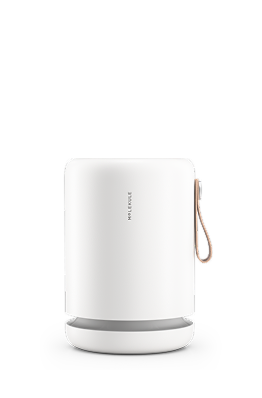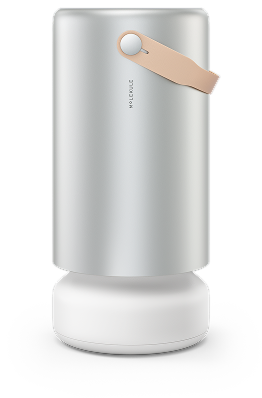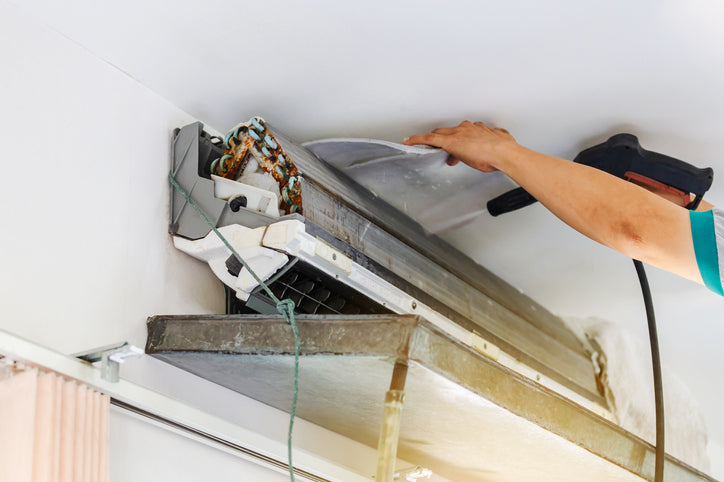Mold and mold spores can reduce the air quality in your home, especially if someone in your household has a mold allergy. Mold growing in the bathroom or basement is bad enough, but what if mold grows in your air conditioner or inside the ducts of your HVAC system? We will explain how mold might form in a window-unit air conditioner or in ductwork, how to prevent it, and what to do if you do find mold in your air conditioner.
The dangers of mold in your air conditioner
If mold is growing in your house, it can release spores that can be easily inhaled. According to the CDC, “exposure to damp and moldy environments may cause a variety of health effects, or none at all. Some people are sensitive to molds. For these people, exposure to molds can lead to symptoms such as stuffy nose, wheezing, and red or itchy eyes, or skin. Some people, such as those with allergies to molds or with asthma, may have more intense reactions…. Severe reactions may include fever and shortness of breath.”
Mold growing in an AC unit is not necessarily more dangerous than mold growing elsewhere in your house. However, the function of an air conditioner is to spread cool air throughout a room, and the purpose of the HVAC ducts is to distribute air throughout the house, which is what makes mold in HVAC systems so concerning. If they become contaminated with mold, they will efficiently distribute mold spores across an entire room or the entire house. If the concentration of mold spores is high enough, you will have a mold problem everywhere, rather than in just one location, and you will be inhaling mold spores in every room, even while you sleep.

How mold grows in air conditioners
Mold spores are everywhere. Unfortunately, it is impossible to get rid of all the mold spores in your house, and even if you did, more would come in every time you opened a door or window. When spores grow into mold, more spores are released, and these higher concentrations of spores are what cause the health problems associated with mold. Thus, the key is to prevent the mold from growing in the first place.
Mold needs two things in order to grow: moisture and an organic food source. Moisture can come from high humidity, or a leak or spill that is not cleaned up properly. Condenser and evaporator coils are the main contributors to condensation, and therefore have potential for water leakage if not properly drained. The food source can be the surface the mold is growing on, like wood or carpet, or organic particles found in dust, if there is enough of it.
Under most circumstances, air conditioners and HVAC ducts are not hospitable places for mold to grow. Sheet metal ducts and styrofoam channels inside window units do not offer mold a food source. However, dust often collects in these places, which can allow mold to grow.
How do I get rid of mold in my air conditioner?
Cleaning up mold can be difficult, messy, and the process of cleaning mold out of an air conditioner is dependent on the type of unit. Car AC units, window units, and central AC units differ greatly regarding the resources needed to eradicate them of mold. Regardless of what you are cleaning, the area where you perform the clean-up should be well-ventilated, and you should wear non-porous gloves and a face mask with goggles, especially if you are sensitive to mold. Mold can be wiped up with a household cleaner and a cloth or sponge. Bleach is not needed to remove mold. If mold has grown on a porous surface such as wood, plaster, carpet or upholstery, you will probably not be able to get rid of all the mold. The moldy item or section will need to removed, thrown away and replaced.

Window unit: By the time you see small mold spots forming on the air direction vanes or grate of your window air conditioner, it is probably too late. The mold you see is just the tip of the iceberg. You can disassemble the unit and try to clean mold from the internal air ducts, coils, evaporators and other parts, but there is always a chance you will miss some and the mold will simply grow back. Mold in your window AC unit means it likely needs to be replaced.

Central AC: Mold growing in the ductwork of your central AC system will almost certainly require professional remediation. The EPA suggests you shut off the system as soon as you notice mold to prevent it from spreading. The ducts will need to be vacuumed and cleaned, which could become very expensive and difficult if it has spread throughout the entire system. Sheet metal ducts are much easier to clean than fiberglass, plastic or lined ducts. The EPA does not recommend applying biocides or surface treatments to kill or prevent mold in ductwork.

Car AC: Under normal operating conditions, the AC in your car should drain moisture properly and not get moldy and the cabin air filter will remove at least some mold spores from the air. If your car gets wet because of a flood or leaving the windows open in the rain, clean and dry it out promptly, and replace the cabin air filter. If mold grows in the AC system, your options are limited. You can disassemble the dashboard and access most of the ductwork, cleaning it with household cleaners and a cloth. Really moldy ducts can often be replaced, but the cost and effort involved varies from car to car. There are chemical products you can spray into the AC system to clean and kill mold, but their effectiveness is questionable, and any chemicals you put into the system will be blown back out again for you to inhale.
How do I prevent mold from growing in my air conditioner?
Controlling moisture is the key to preventing mold in air conditioners. Unfortunately, air conditioners can also be a source of moisture. Here are some steps you can take to control moisture when using an air conditioner.
- Window units should fit the window tightly to prevent rain and humid outdoor air from entering the room.
- When humid air is cooled in an air conditioner, the water vapor in the air condenses out of the air (cool air can hold less water than warm air, so the air is “wrung out” like a sponge). Window units should be tilted slightly toward the outside to allow this condensation to drain properly.
- Grates and filters in window units should be cleaned regularly to prevent dust build-up, which can provide a food source for mold and impede air flow.
- Whole house AC units should have drainage systems, ideally leading to a drain tile, through a basement slab, or to a utility sink. Make sure yours is working properly so moisture does not collect around the unit or get introduced into the ducts. Drains can become clogged by debris or build-up and result in significant flooding in your house.
- Portable AC units need to emptied periodically. They typically have an auto shut-off and a light to let you know when the reservoir is full. Make sure portable units are empty and dry before storing for winter.
- HVAC ducts tend to self-regulate moisture, because the air flow dries them out. Keep all grates and air returns unblocked and clean to allow air to flow properly to all parts of the system.
- Replace air filters regularly. Clogged filters not only provide a food source for mold, but they can impede air flow.
- Never introduce moisture to your HVAC system. Duct cleaning should use dry vacuuming or dry wiping, never water.
Mold growing in an AC unit or in your home’s HVAC system is a serious problem, because it allows mold spores to be spread throughout the house. Cleaning up an HVAC mold problem is a difficult and possibly expensive task. The best way to deal with mold in an air conditioner is to control moisture and prevent it from happening at all.








